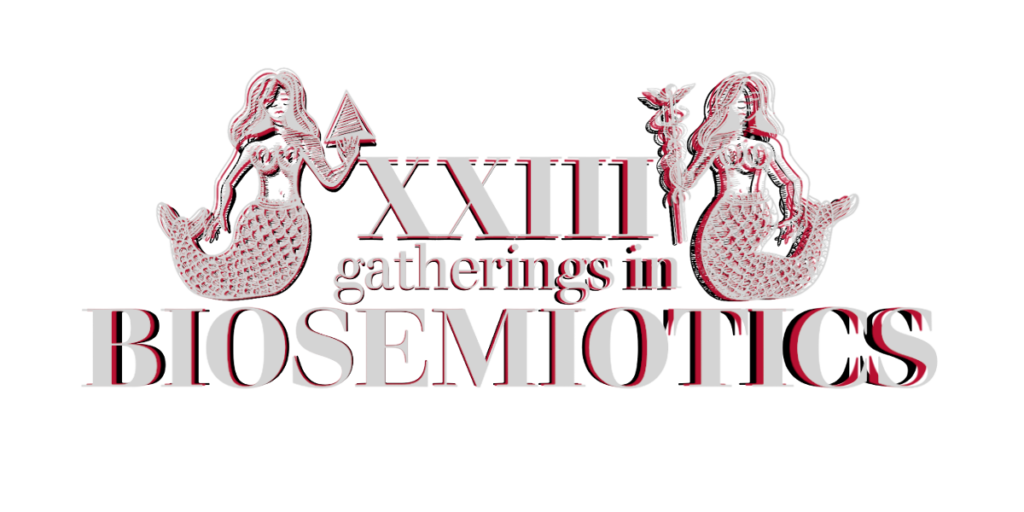Origins and Phases
Yagmur Denizhan & Vefa Karatay
Classically, the quest for the origin of a complex and dynamic entity -be it life, mind or semiosis- seems to demand an explanation of how this entity may have spontaneously emerged as a functioning whole without any prior equivalent. Analysing the full-fledged system one can identify its components, but these are typically too complex and too specific themselves to have emerged independently and to have self-organised as a coordinated system after a chance encounter. Therefore, the main challenge of origin questions is to find scenarios of how simple unstructured systems can become structurally and/or functionally more complex without a deus ex machina. A plausible scenario for the increase of complexity seems compartmentalisation in a system.
The spontaneous emergence of compartments of different viscosity in a mixed liquid (the so-called Liquid-Liquid Phase Separation) is a long-known phenomenon in physics. An equivalent of such relaxation processes involving biological matter first stroke biologists’ attention in the context of pathological conditions such as amyloid formation in some neurodegenerative diseases. Yet progress in scientific research demonstrated that the emergence of separate domains with distinct phases plays an equally important role in healthy life processes. The expansion of research interests eventually created a need for a more general notion than Liquid-Liquid Phase Separation. Some recent research articles suggest the more general term Phase Separation (PS) in order to also include separation processes involving biological macromolecules that can take on various tunable viscoelastic phases that cannot be categorised as a liquid. Also, the energetic character of phase separation has a richer repertoire in biology: while it is typically a passive relaxation process in physics, in biology also active control mechanisms can be at work in compartmentalisation and complexification. It is not a coincidence that models for the origin of life-from Oparin’s coacervation hypothesis (1924) to the more recent ones such as Sharov’s “Coenzyme World” model-all rely on LLPS mechanisms.
More than half a century before the recent findings of biophysics on the significance of phase separation, Gilbert Simondon borrowed the same notion from physics and generalised it as one of the critical concepts of his ontogenetic theory [1]. In order to have an all-embracing theory, he differentiates between three operational modes of the process of individuation: physical, vital and psycho-collective. His theory places at the beginning of any process of individuation the so-called pre-individual being, which is in a state of pure potentiality and tension where no phases exist. In this metastable state, the slightest perturbation can unleash the process of individuation leading to the emergence of different phases both as spatial compartments (topological domains at distinct phases of matter) and temporal ones (distinct stages of the process). Simondon calls this operation phase separation (“dephasing” – Fr. se dephaser). In the physical mode of individuation, phase separation refers to the same relaxation process known in physics, which ends at a stable state where all tensions are resolved and all potential becoming are exhausted. In more complex systems, however, the conflicts and tensions within the pre-individual being can only be partially resolved, such that some portion always remains unresolved as “pre-individual charge”, leaving room for further individuation. Therefore, one can say that phase separation offers a mechanism not only for the origin of life but also for the permanent origination potential that is characteristic of life.
When interpreted in the light of Simondon’s Theory of Individuation, the thriving findings of biophysics research on phase separation can be said to demonstrate how vital individuation operates at the molecular level, generating structures and processes with limited stability. Some of these can be further stabilised by new phase-tuning mechanisms that emerge at later stages of individuation and thereby constitute strictly conserved codes, while others remain less stable and, therefore, more prone to external influences. This reminds us of the Code Duality thesis proposed by Hoffmeyer and Emmeche [2] as ‘the chain of events which sets life apart from non-life…. needs at least two codes: one code for action (behaviour) and one code for memory’, and seems to offer an explanation of how these different codes may have emerged in the course of vital individuation.
References
Hoffmeyer, J., & Emmeche, C. (1991). Code-duality and the semiotics of nature. In M. Anderson & F. Merrell (Eds.), On semiotic modeling (pp. 117–166). New York: Mouton de Gruyter.
Simondon G. (2020). Individuation in light of notions of form and information. Translated by: Adkins, T. University of Minnesota Press.

